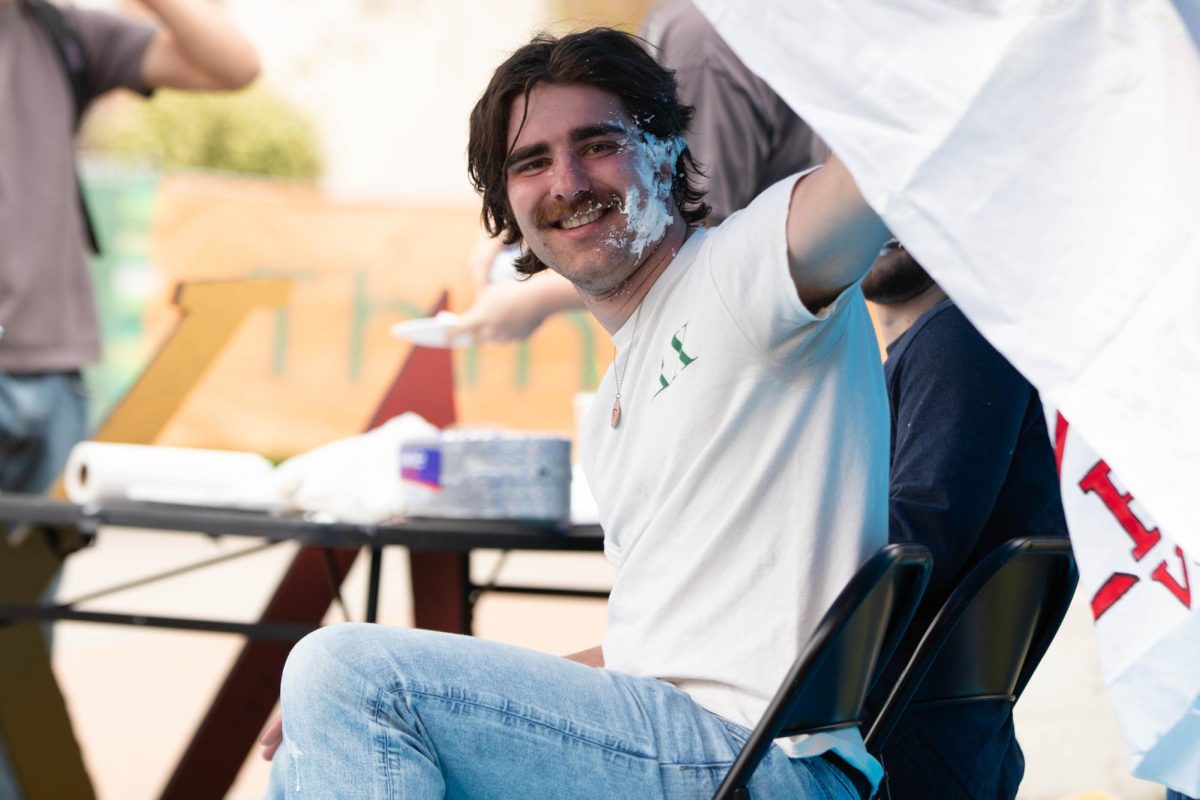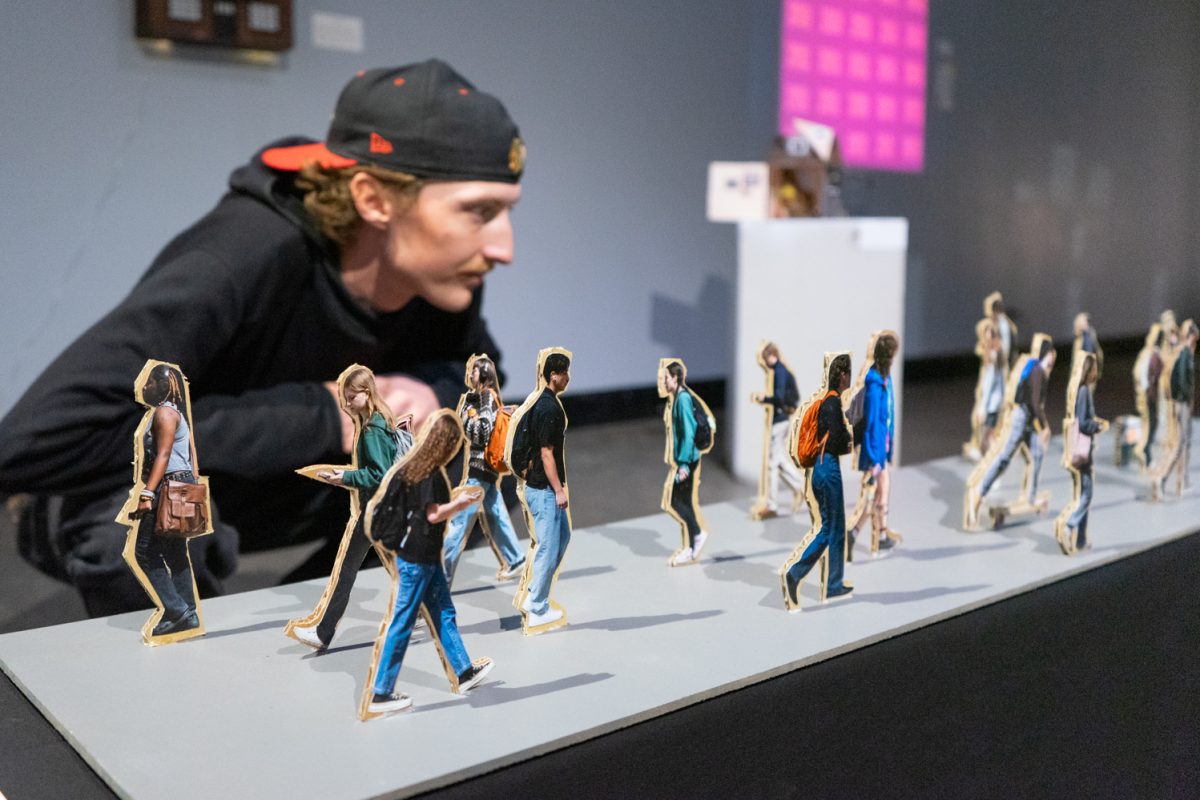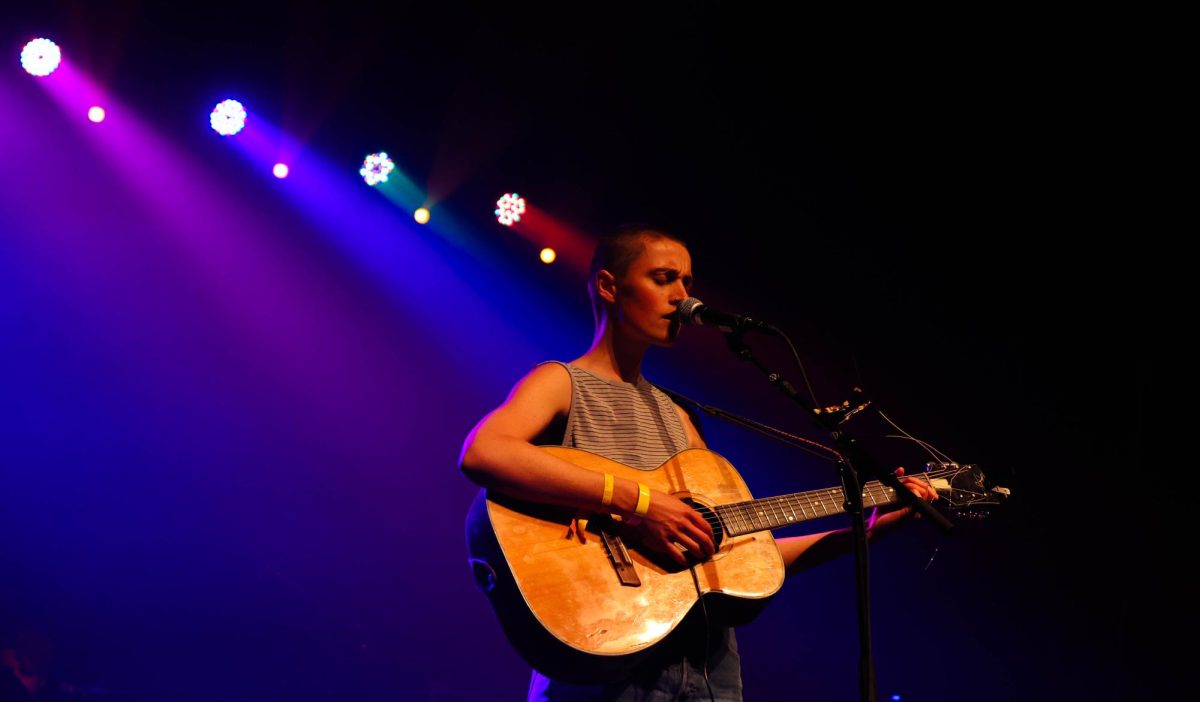The classroom is not the only stage on which learning takes place. A museum or concert hall can open minds of all ages.
John Seesholtz and a small student ensemble sang South African music at the Gregory Allicar Museum of Art Tuesday night. The music was a mixture of praise and protest songs from the Zulu culture. Each piece was related in some way to the art, which surrounded the audience. The performance left the room in a state of inspiration and rejoicing.
John Seesholtz is an Associate professor at Colorado State University. He recently returned from Italy where he taught and performed with the La Lirica Musica Opera program. He is a baritone classical and jazz singer and has studied classical music and vocals for 26 years. Recently, he performed in the Virtuoso Concert Series at the University Center for the Arts.
The Zulu are one of the better-known tribes of South Africa. Zulu singing styles are traditionally used to tell stories or portray emotion that one could not convey through unsung words. Some of the language and music can be found in European and American culture as well. The famous song, “Wimoweh” from Disney’s “The Lion King” is an example of Zulu harmonies and rhythms. The Zulu language can also be heard in the opening scene of “The Lion King.” Many white musicians have performed Zulu music throughout history much like the performance Tuesday.
Seesholtz is known as a Jazz performer in communities across Colorado, and performs with several groups and ensembles throughout the state. He is professionally trained in classical music but performs many genres.
“I love it all,” Seesholtz wrote in an email to the Collegian, “That’s the beautiful thing about classical music, every composer and language, every poem takes you on a journey of history and culture, and into the soul of the poets and composers who took the time to write it. I love all kinds of music from alternative to classical.”
The set was another kind of music indeed. The atmosphere of the evening was immediately different from that of recital hall concerts. While a darkened theater can feel stuffy and somewhat conservative, the Gregory Allicar Museum of Art had a light, airy feel. That, coupled with the abundance of historical artifacts, set a more thought-provoking tone. Only 20 to 25 people including several young children attended but that number nearly filled the intimate space.
Historian David Riep gave some context for each piece and related themes found in the music back to artifacts in the museum exhibit, which focused on beer culture.
“We really try to focus on finding music that fits the art,” Seesholtz explained.
The first piece was a South African Zulu freedom song called “Singabahambayo.” This short song of praise was clearly upbeat and celebratory. Several students performed with Seesholtz and demonstrated beautiful harmonies and differentiated parts. The words were sung in the Zulu language but translate to: “We are marching on this earth but our home is in heaven. We say hallelujah.” Many of the songs performed including “Singabahambayo” surfaced during apartheid in South Africa.
“This is a song about displacement,” Riep said. “We need to keep in mind the context (of these songs). Individual identities were essentially being taken away. People were being moved and separated to avoid any kind of unified uprising.”
The idea of hope could be felt in the positivity and rhythm of the song. The harmonies of the ensemble made it feel as if they too were coming together for a unified cause.
The next piece was an adaptation from South African Folklore. “Abiyoyo” was originally the story of a young boy who has to save his community from a giant. The story incorporates classic characteristics of South African folklore including chaos, a trickster and the supernatural. These themes also appeared in the African pottery displayed in the exhibit. “Abiyoyo” and the next song, “Siyahama,” both utilized call and response and presented more gorgeous harmonies.
“It was moving, inspiring, informative, educational, mind-expanding, and delightful,” said community member Vicki Siska. “I didn’t know (the museum) was here. It is world class.”
Music is the Museum Concert Season is a running series put on by the Gregory Allicar Museum of Art.
“I came to a previous Music in the Museum,” said Raedene Combs, another audience member. “This one was even more inspirational.”
Upcoming Music in the Museum concert:
Musicians: Oboe professor Andrew Jacobson
Accompanying students: Members of the “It Could Be Anything” ensemble
When: Tuesday, Oct. 10 at noon and 6 p.m.
Where: The Griffin Foundation Gallery
Collegian reporter Emma Turner can be reached at entertainment@collegian.com or on Twitter @EmmaTurner1228










